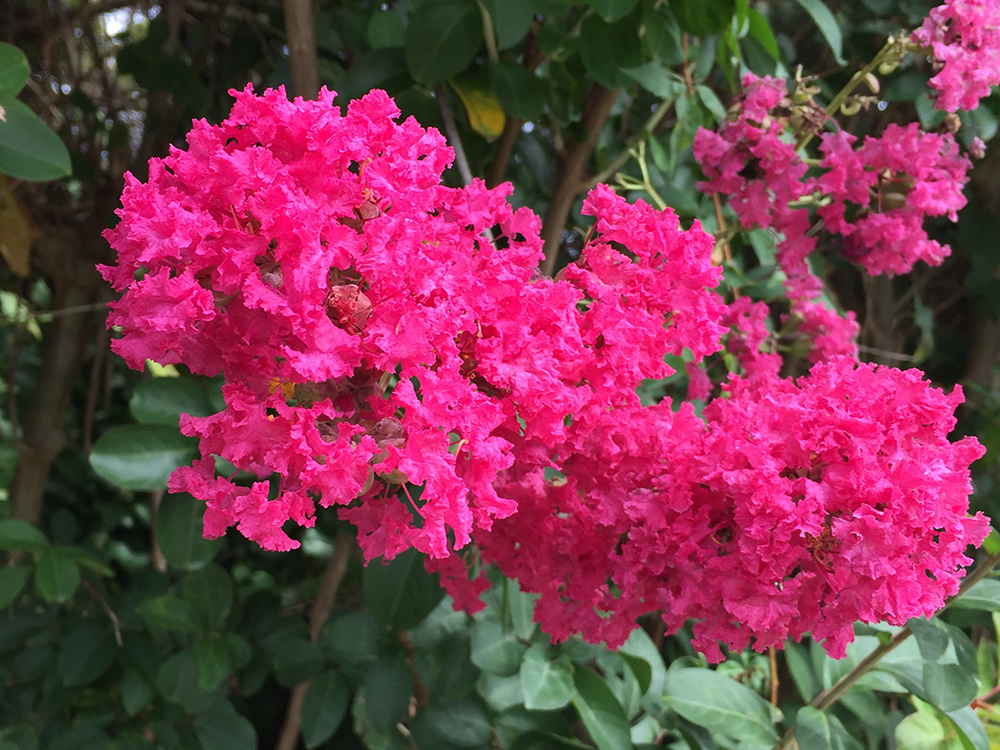By Tammy Thornton

Though many summer flowers have begun to fade, and fall bloomers aren’t quite in bud, bursts of color are everywhere in South Jersey. Crepe myrtles are stealing the show this time of year.
I remember when we first bought our house, oh so many Junes ago. We had the strangest-looking tree right in front of our porch. It seemed to have no bark, but instead, had a strange, smooth mottled surface. When August rolled around, we had the treat of realizing that our “odd tree” was a crepe myrtle full of clusters of beautiful deep pink flowers. Although to my naive eye the tree appeared to be missing its bark, it was actually shedding its bark in patches, showing one of its natural characteristics. As crepe myrtles reach maturity, their bark begins to peel, revealing interesting color variations. Since the tree is deciduous and loses its leaves in the winter, the coloration of the layers of bark provide winter and early spring interest. Because it is also one of the last trees to leaf out in the spring, it often appears “naked”. Once the showy summer blooms appear, you’ll know it was worth the wait. Sadly, we eventually tore down our dilapidated front porch and had to remove the tree since it was too large to be so close to the house. Even our sweet neighbor across the street missed the tree since she had enjoyed a better view of its mass of pink blossoms high in the sky. Fortunately, I was able to transplant some of the saplings to our backyard. I’m sure the previous owners some 20-30 years before never envisioned how large the tree would become.

Plan for the future when planting crepe myrtles by considering the size they will be when fully grown. They are generally fast growers (one-two feet per year) and some varieties can reach 20-30 feet. You can also purchase mid-sized types that reach between 8-12 feet, or choose dwarf varieties which only grow about 2-3 feet, and can be grown in pots. They would make a lovely welcome flanking an entryway.
Take a drive in the southern states in the summer, and you will see crepe myrtles on almost every corner and along the highways. They are often referred to as “Lilacs of the South” because many lilacs are difficult to grow in the south due to their warm winters. (We can keep that in mind this winter, and remember how “blessed” we are when we’re shoveling snow.) Fortunately for us, crepe myrtles also thrive in South Jersey, since we are right on the edge of their hardiness zone, 7-10.

Once established, crepe myrtles are drought tolerant, and appreciate our well-draining, sandy soil. Grow in full sun for optimal colorful blooms of purple, pink, white, and vibrant red.
Choose the right size shrub or tree for your landscape to save yourself difficulty later. Provide full sun and well-drained soil and your crepe myrtle should love you back with its long lasting blooms. Given the right conditions, this fairly care-free flowering tree can live over 50 years.

Tammy Thornton is a mom of four, a substitute teacher, and a Sunday school teacher. She is passionate about gardening and cooking, and loves the beach.





